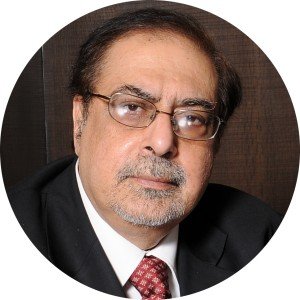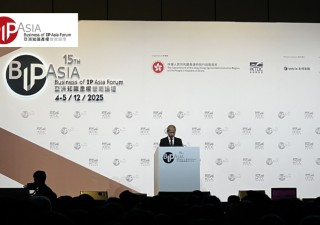How skilled is a “Person Skilled In The Art” supposed to be?
17 January 2022

Patent laws of various jurisdictions stipulate inventive step as one of the requirements for patentability. The step has been stipulated so that a trivial and insignificant variation, which a person may deduce as an obvious consequence of the prior art, does not qualify for the grant of a patent. In other words, qualification of a subject matter for patentability also rests on its non-obviousness from a prior art.
The TRIPS agreement left some flexibility in the inventive step/non-obviousness of an invention as it did not define it and left its definition to the member countries. A hypothetical person was created in patent law jurisprudence worldwide and this person, in the Indian Patents Act, 1970, is called a “person skilled in the art” (PSITA). If this person’s assessment from the prior art lead him to an invention, then the invention fails the test of inventive step and the invention is not patentable. Other countries have defined the person in question as ordinarily skilled or averagely skilled. However, none of the countries have defined the abilities and capabilities of such a person. So, how skilled is a person supposed to be so that he qualifies as a person skilled in the art.
Let us look at the dictionary as to what skill and art mean in common parlance. The Merriam- Webster dictionary defines skill as the ability to do something that comes from training, experience or practice; the ability to use one’s knowledge effectively and readily in execution and performance; a learned power of doing something effectively. Craft, profession, knowledge, know-how, imagination, ingenuity, inventiveness and the like are the synonyms for the word art. Thus, the sum total of a person skilled in the art is a person who is competent and knowledgeable in the particular field in question and is able to use his acquired knowledge effectively. The general meanings of the terms cannot take us any further.
A PSITA, thus, became a subject matter of litigation and responsibility of defining the abilities and capabilities fell on the shoulders of courts. Indian courts have, from time to time, defined the attributes of a PSITA, which are summarized hereunder:
PSITA – A competent craftsman.
In the 1979 case of Biswanath Prasad Radhey Shyam v. Hindustan Metal Industries, the Supreme Court of India averred that the trace of inventive step lay in the answer to the question as to what would naturally flow from a prior art to a person thinking on the subject. Since the reference here is to a person thinking on the subject, it appears that the person should be conversant with the subject and is thoughtful. Secondly, the judgment also qualifies a PSITA as a competent craftsman (or an engineer as distinguished from a mere artisan) endowed with common general knowledge and problem solving ability. If he can be an engineer, he can as well be a professional in the field in the question. The court also emphasized that a PSITA can use only the knowledge available on the priority date related to a subject matter. In the 1968 case of Farbwrke Hoechst & B. Corporation v. Unichem Laboratories, reference to a PSITA in the field also restricted the state of knowledge existing at the date of patent.
PSITA – Neither an un-imaginary person nor having distinct qualities.
In the 2008 judgment of Hoffmann-La Roche Ltd & Another v.CiplaLtd., the Delhi High Court averred that a skilled worker in the concerned field in the art need not be an un-imaginary person or having distinct qualities. The only issue to be decided was whether, for practical purposes, something was obvious to a skilled worker in the field with the prior art available at the time of patent application.
PSITA – Neither dumb nor ignorant and can be motivated.
The Indian Patent Appellate Board (IPAB) held that PSITA is not a dumb and ignorant character. She is aware of the happenings in her field and has skills to perform experiments with the knowledge of the state of the art. If there is a motivation for her to go ahead and try something in order to solve a problem with assurance of a reasonable success, she can certainly do that. (Glaxo Limited v. Fresenius Kabi Oncology Limited (2013) and Allergan India Private Limited v. Ajanta Pharma Limited Inc. (2013)) The IPAB, in Enercon India Ltd v. Aloys Woben (2013), explained that “coherent thread leading from the prior art to the obviousness” or, in other words, “the reasonable expectation of success embedded in the prior art which motivates the skilled person to reach to the invention, is the most crucial determining factor in ascertaining inventive step”. The IPAB further clarified in Enercon v. Alloys Wobbens in 2013 that a PSITA is not a dullard and has certain modicum of creativity and stated that “we do not intend to visualize a person who has super skills, but we do not think we should make this person skilled in the art to be incapable of carrying out anything but basic instructions”.
If the teachings of a combination of prior art documents are expected to lead to a reasonable expectation of success, there is a reason to consider a PSITA as being able to try the combination and arrive at the invention. The IPAB affirmed that a PSITA has common sense to understand what clearly follows from the prior art and if there are no ‘Eureka’ or ‘aha’ moments in an invention, obviousness exists in the eyes of a PSITA. However, a PSITA is not expected to be demotivated by showing some degree of unpredictability in the art so long as there is a reasonable probability of success. Reasonable expectation of success is all that a PSITA requires to work out from a prior art (Ajanta Pharma Limited v. Allergan Inc. (2011))
PSITA – Motivated by similar structure and functionality (pharmaceutical invention).
The guidelines issued by the Indian Patent Office suggest that in case of a pharmaceutical invention, a PSITA could be motivated to combine the teachings of products which have structural and functional similarity. A synergistic effect, synergistic outcome of the combinations, prior art prejudice etc. would usually be non-obvious to a PSITA. However, a PSITA is expected to choose a better alternative from the known alternatives disclosed in the prior art.
PSITA – Endowed with common sense and better understanding than a person of average knowledge.
In the case of Hoffman- La Roche Ltd. & Anr. v. Cipla Ltd., the Delhi High Court suggested that a person skilled in the art is presumed to know not only the state of the art at that time, but also to possess understanding better than a person of average knowledge thereof. Further, the person should have knowledge that was publicly available along with common sense. The judgment, therefore, made it clear that a person should be sufficiently skilled or knowledgeable and should not merely be a person of ordinary skills.
PSITA – Not to be guided step-by- step.
In the 2009 case of Sankalp Rehabilitation Trust v. Hoffmann- Roche, the IPAB stated that a PSITA, based on his knowledge of prior art, knows how to proceed further in the normal course of research. There is no need to guide him step-by-step as he can work his way through it. He is capable of reading the prior art as a whole and be taught by what is contained in it.
PSITA – Not to be guided by trial and error.
In the case of Novartis AG v. Union of India and Ors in 2013, the court stated that a PSITA cannot be expected to be guided by trial and error. He is solely guided by what the prior art documents mean and what naturally flows from the prior art.
PSITA – To avoid hindsight reconstruction.
Expressing a note of caution, the Bombay High Court in F.H. & B. Corp.v. Unichem Laboratories (1969) cautioned the courts of law against the common human failing of being wise after the event. If something has been discovered by research, it shall be unfair to label the same as obvious based on hindsight reconstruction from the discovery by a PSITA.
As mentioned earlier, when a PSITA assesses obviousness, the invention should be excluded so that assessment is based only on the prior art. A PSITA, therefore, is not expected to use hindsight reconstruction from a patent in suit.
PSITA – No territorial restriction.
In Aloys Wobben, Aloys Wobben argued that a person skilled in art should only be a resident of India. However, the IPAB contended that there is no such territorial restriction so long as the person is competent with regard to the skill and knowledge of the state of the art. Also, the Patents Act, 1970 does not state anywhere that a person skilled in the art should be an Indian. Therefore, in the absence of such a limitation, it is obvious that the law framers did not wish to put any such restriction on the profile of the person skilled in the art. The IPAB also made reference to the Delhi High Court judgment in F. Hoffmann-La Roche, which said that it is not necessary for a person skilled in the art to be in India or an Indian.
PSITA – Evolving nature.
In the 1935 judgment of Lallubhai Chakubhai Jariwala v. Chimanlal Chunilal and Co., the Bombay High Court, while referring to availability of prior art to a workman skilled in a particular art, said that it needs to be ascertained if a prior art document is available in a public or academic institute library of India and whether the same is easily accessible. During olden times, accessibility of resources to a skilled person within the country was limited. Corresponding to the ease of access to the resources of humans, skill and knowledge level of a skilled person has increased and is bound to increase further. A person skilled in art is bound to be more evolved and better informed than his predecessor. The same is also reflected in American jurisprudence wherein, a POSITA has evolved from an unrecognizable descendent of an “ordinary mechanic” in Hotchkiss v. Greenwood (1850) to an ordinary researcher. A POSITA continued to be considered an ordinary mechanic until 1950. It may be a matter of time before a highly evolved and a resourceful person skilled in the art may be able to prove all, except a few, inventions obvious in future.
Notwithstanding attributes of a PSITA defined by the courts and discussed herein, the threat of litigation regarding assessment of inventive step shall continue to loom large. At the same time, a lot of clarity to the attributes of a person skilled in the art has been rendered by various courts’ judgments.








